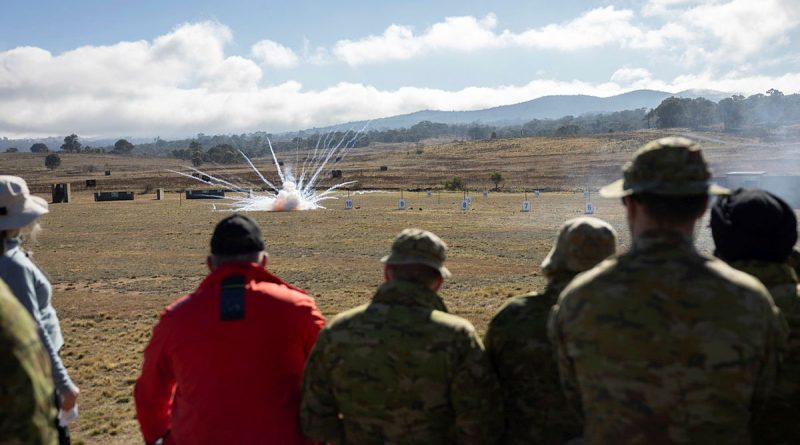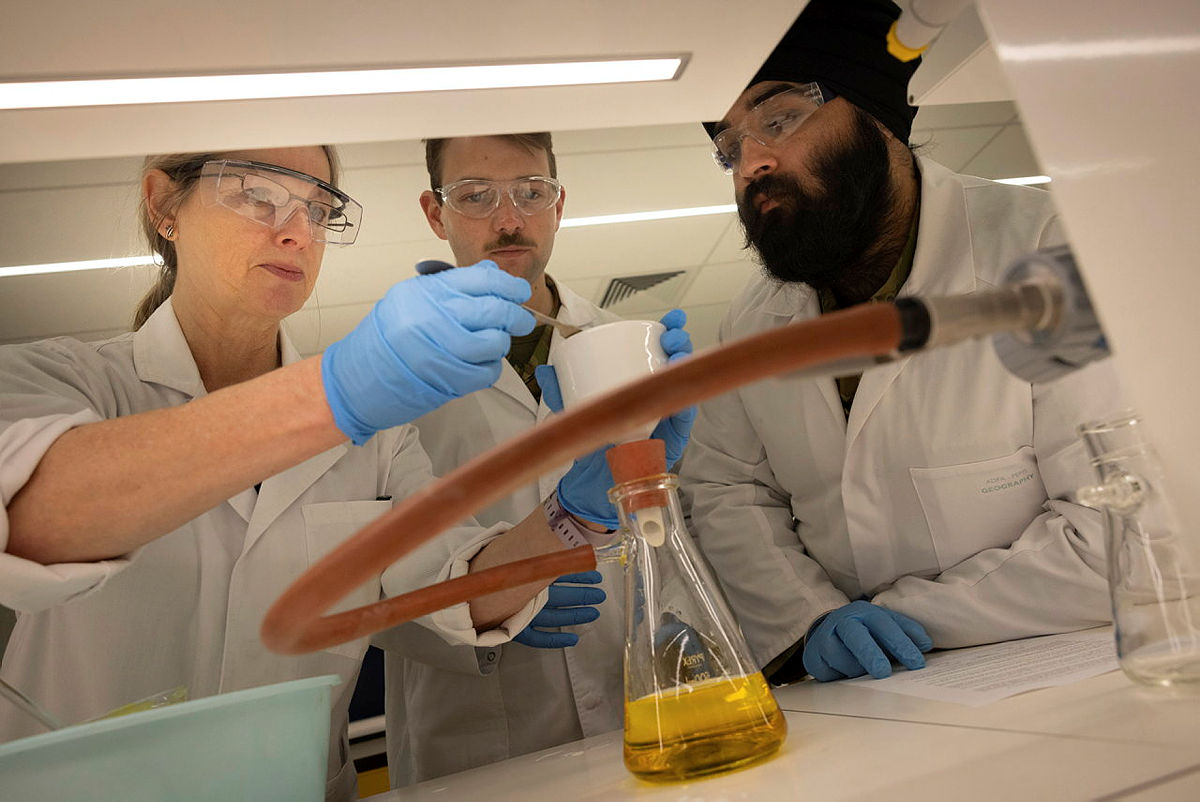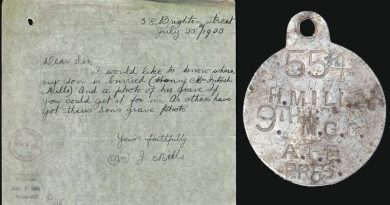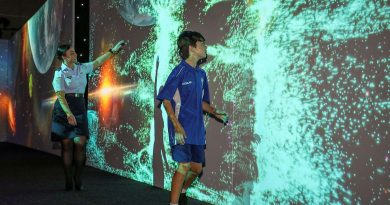Course goes off with a bang

A higher education into the science of things that go bang is now available in Australia to nominated ADF personnel, APS staff and approved Defence contractors.
CAPTION: Students of the University of New South Wales Master of Explosive Ordnance degree observe an energetic substance demonstration at Majura Training Area, Canberra. Story and photos by Sergeant Matthew Bickerton.
The Master of Explosive Ordnance degree, run by the University of New South Wales, Canberra, was established in 2023 as a domestic study option.
The course coincides with Defence’s efforts to bolster the Government’s commitment to pursue a comprehensive approach to the development of guided weapons and explosive ordnance capabilities.
Director of Engineering for Guided Weapons and Explosive Ordnance Group’s Systems Division, Bernard Smith-Roberts, said this would help train personnel ahead of Australia acquiring additional guided weapons and explosive ordnance.
“To achieve these goals, we need a competent, skilled and educated workforce. This degree is essential in developing that workforce,” he said.
Prior to this master’s program, people were sent overseas for higher education in explosive ordnance.
“We get some really deep expertise from that, but it’s expensive and limited to several people per year,” Mr Smith-Roberts said.
Armament engineer Flight Lieutenant Joe Podger, of 460 Squadron, who is studying part-time, said this kind of study was aimed at mid-career professionals.
As a result, they are more likely to have families, making overseas study more challenging.
“This program is much more accessible to people, and that’s one reason why I did it,” he said.
Some armament engineering roles within Air Force require a master’s qualification, which is another reason for his enrolment.
Students receive training in explosive fundamentals, including the chemistry, manufacturing of energetic materials and the effects of explosive ordnance.
CAPTION: Army officer Lieutenant Bavneet Girgla, left, and Dr Lynne Wallace, of the University of NSW, take part in a practical chemistry lesson as part of the Master of Explosive Ordnance degree at ADFA, Canberra.
This also covers how guided weapons and explosive ordnance are used as part of the ADF’s warfighting capability.
Training to be an ammunition technician, Lieutenant Bavneet Girgla from the Army School of Ordnance is studying the master’s degree part-time.
“The value is understanding the different properties of energetic materials, how they interact and how it all relates to the Army. It all goes hand in hand,” he said.
Because of the hazardous nature of explosive ordnance, the degree plays a role in handling practices.
Weapons electrical engineer Navy Lieutenant Christopher Cox, of Maritime Explosive Ordnance SPO, works primarily with the Mk 54 Lightweight Torpedo.
“Part of my role is advising on safety, and having a deeper understanding of the chemical compositions, especially in the warhead, gives me greater insight,” he said.
“This program instils confidence in me regarding the safety advice I give and that I’m keeping people safe.”
.
.

.
.






